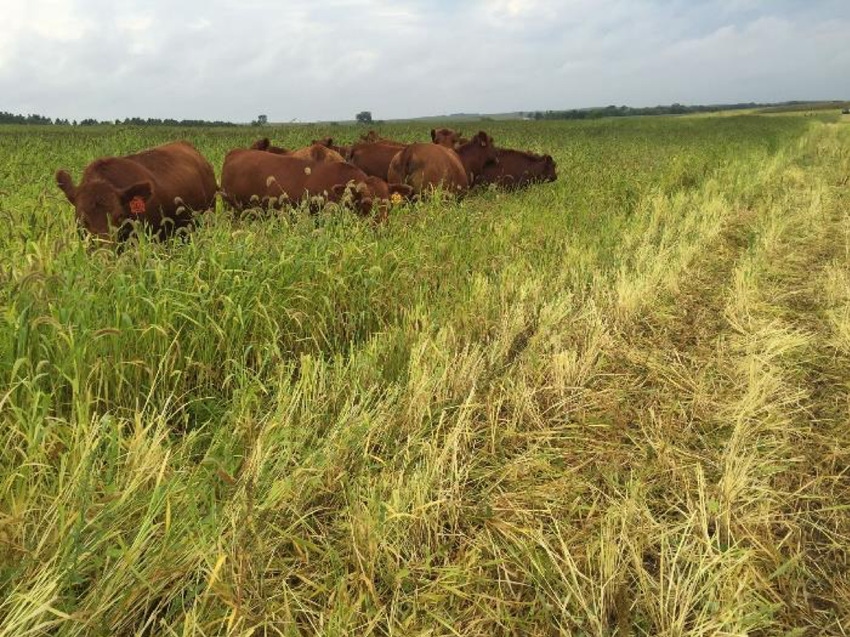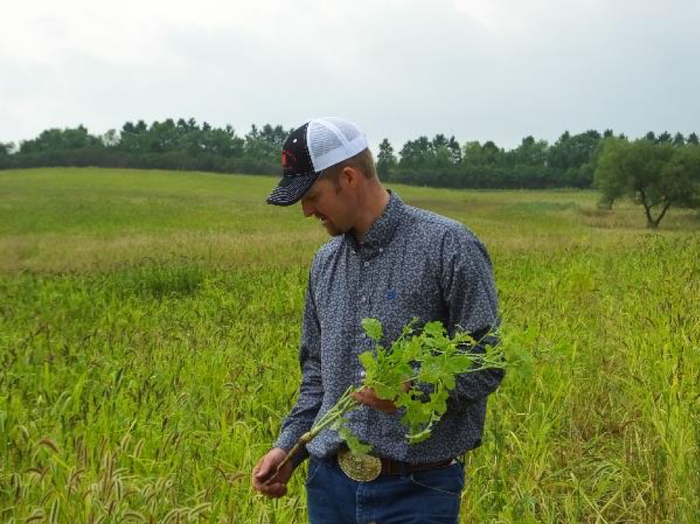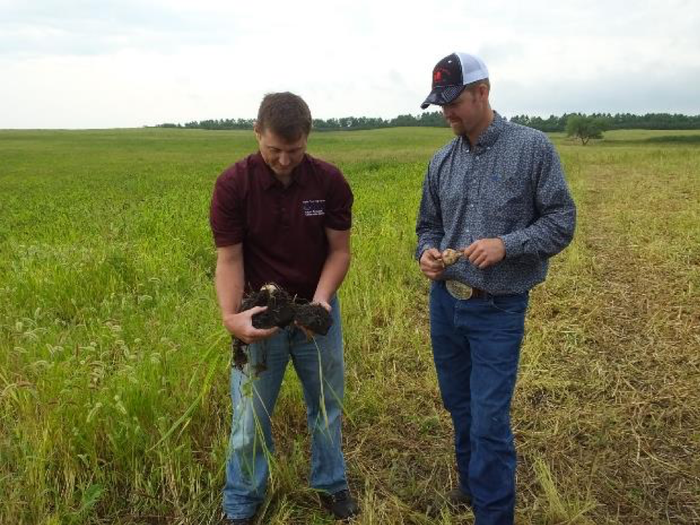South Dakota rancher Jared Namken uses cover crops and rotational grazing to lengthen the grazing season, reduce feed costs, and build healthier soils across his 1,100-acre operation in Lake Norden, South Dakota.
July 19, 2018

Source: USDA
Jared Namken is an Angus man. Red Angus, specifically. A fourth-generation farmer-rancher, he hopes to pass on his operation to generation five with the soil in even better shape than when he started. He’s worked with USDA’s Natural Resources Conservation Service to manage Namken Red Angus with that goal in mind.
“It all started with the planting of trees with our local conservation district,” Namken says. “After the trees went in, we saw right away a big increase in the numbers and diversity of birds, insects, deer, and other wildlife species. Then came all these other management practices,” he says.
“We try to include turnips, radishes, and a cool-season grass in the mix," says Namken. "We once tried straight turnips, but we've found that the diversity of species is better for the cattle."

A fourth-generation farmer-rancher, Jared Namken hopes to pass on his operation to generation five, with the soil in even better shape than when he started
To expand his grazeable acres, Namken introduced rotational grazing across his cropland in 2004. More recently through USDA's Environmental Quality Incentives Program, he was able to install aboveground water lines on his operation, bringing fresh water to cattle, which greatly improves the distribution of his cattle across the landscape. This water has resulted in a better rotational grazing system that has changed the plant species growing in his pastures, complementing Namken's goal of bringing back native grasses and forbs for improved forage.
Now, the entire farm is subject to grazing for at least part of the year.
“We can graze this ground with these cover crops most of the winter some years,” Namken says. “Depending on snow cover, temperature, wind, or cow pregnancy trimester, we might not have to supplement feed until late winter. These cattle will dig through a lot of snow to graze on our concoctions of cover crops, even in harsh winter conditions.”
Once the cows are out, Namken's cropland is planted in no-till corn, soybeans, wheat, oats, or alfalfa.When asked about the collective benefits of conservation practices used across his operation – specifically no-till, cover crops, and rotational grazing – Namken has a list.
"By grazing our cover crops, we're able to lower our feed costs while adding diversity and improving the health of our land. No-till reduces our fuel usage, which is another big benefit. Our ground is absorbing more water with less lost in runoff, and it's more drought hardy. Rotational grazing spreads manure and nutrients evenly across our fields, which is also an economic benefit. And, moving the cows into our cropland gives our pastures a longer resting period than they had before. We ultimately see greater diversity in our summer pastures and improved soil health across our cropland fields."
Managing for the future
Though he appreciates the economic benefits of these conservation practices, Namken seems most excited about what he calls the "big picture” – the long-term health of his land and future sustainability of his operation.

Namken works with Jim Dylla, a District Conservationist with the Natural Resources Conservation Service, to select appropriate species for grazing.
“My kids might be the fifth generation to work this land, and I hope to pass this farm on to that next generation in better shape than when I got it," Namken says.
"Growing up, everything was tilled. That's just what everyone did. Practices now find us planting cover crops, as we’re making the soil more productive again. I hope we never stop learning here. There's always a way to improve, a new idea to learn, a way to do better.”
You May Also Like



